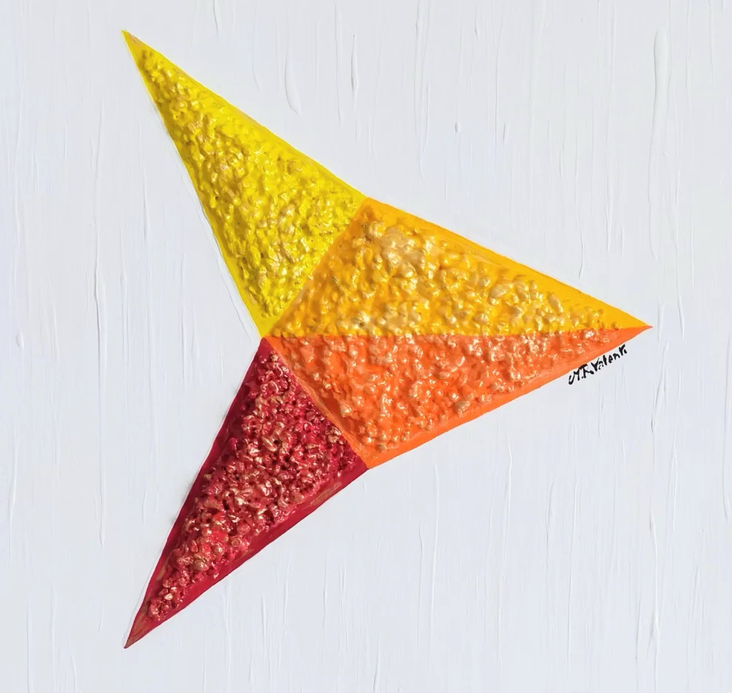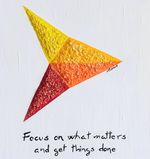Monotasking With 1Focus: The Secret to High-Quality Work
May 18, 2024 by Vreny Blanco · 5 min read · Time Management, Digital Wellness

The ability to focus on one task at a time is incredibly valuable. It can significantly improve the quality of your work and increase your overall efficiency.
In this blog post, we will discuss the importance of monotasking and show you how to use 1Focus to block out all digital distractions, allowing you to concentrate on one task at a time.
The Cost of Multitasking
Multitasking may seem like a way to get more done, but it actually reduces workflow, increases stress levels, and impairs both short-term and long-term memory. Science has shown that when people multitask, they are more easily distracted, less productive, score lower on information recall tests, and make more mistakes.
Every time you switch between tasks, you pay a cognitive and time cost. The reason is simple: the brain cannot give equal attention to multiple tasks that require high-level brain function. It takes time to mentally re-engage with the task at hand, making you less efficient and more prone to errors.
The Benefits of Single-Tasking
Focusing your attention on only one task at a time is the secret to getting things done right.
The habit of single-tasking (focusing on one task without distraction) allows you to manage your attention more effectively. Sustained attention not only improves the quality of your work but also enhances creativity and intuition. Monotasking reduces the load on your working memory, decreases your susceptibility to distractions, and helps you complete tasks more efficiently and make fewer mistakes.
Practical Strategies for Single-Tasking
1. Break Projects Into Smaller Steps
Large projects can be overwhelming. Break them down into smaller, more manageable tasks. This makes it easier to focus on one step at a time, improving your concentration and productivity.
2. Prioritize Tasks
Make a to-do list and rank your tasks in order of importance. Start with the most important or challenging task. Give it your full attention for a period of time, take a break, and then either continue or move on to the next task on your list.
3. Manage Your Time
Use the Pomodoro Technique: This time management method involves working on a task for 25 minutes, taking a 5-minute break, and then repeating the process. This technique helps maintain focus and prevents burnout. Research has shown that working in intervals helps with monotasking, especially for people who struggle with attention.
Use time blocking: Time blocking is a productivity technique that involves structuring your day by dividing it into specific time segments dedicated to different tasks or activities. You can use tools like Google Calendar to manage your time blocks. This method helps establish a structured routine, increases productivity, and reduces decision fatigue by focusing on one task at a time.
4. Eliminate Distractions
By controlling internal and external distraction, you can produce higher quality work in less time. A three-second interruption can double your risk of making mistakes while completing a task. Every time you switch from a task to a distraction and back again, it takes time and brain energy to refocus, and work takes longer than it should.
Create a distraction-free environment: Turn off and remove everything that’s not essential to the task you’re working on. This includes muting your phone, closing unnecessary browser tabs, blocking distracting apps, and websites, and finding a quiet workspace.
5. Manage Stress
Spikes in the stress hormone cortisol reduce working memory storage and retrieval. Anything you can do to reduce and manage stress can support the brain for monotasking. This includes exercise, spending time with friends and family, taking up a new hobby, spiritual or religious practices, psychotherapy, meditation, and yoga, among others.
6. Practice Mindfulness and Awareness
Train your brain for monotasking by practicing ways to stay present and focused. Daily meditation and reading are excellent ways to improve your ability to focus. You can also enjoy walks in nature with your dog or practice regular breathing exercises.
How to Block Apps and Websites on Mac
Digital distractions are among the biggest barriers to maintaining focus. 1Focus offers a solution by helping you create an environment optimized for single-tasking.
By setting up an Allowlist, you can permit only the websites essential for your work while blocking all unnecessary sites and apps. This approach is far stricter than blocking specific websites and can be paired with task presets to focus on one task at a time.

Steps to Create an Allowlist With 1Focus
- Subscribe to 1Focus Pro.
- Open 1Focus.
- Enable Websites → Blocked Categories → All Websites.
- Add any websites you need as website exceptions.
- Block all apps exept the ones you need for work/study.
- Start blocking.
Done! You can set up 1Focus according to your needs and work schedule. If you need different programs or websites depending on the task you are working on, you can create separate presets for each, with its specific allowlist and timetable.
Conclusion
Getting into the habit of focusing on one task at a time without distractions can transform your work life. By single-tasking, you can produce higher-quality work, be more creative, and complete your projects faster, freeing you up for other important and necessary activities, like rest and time with your loved ones.
Start implementing these strategies today to see a significant improvement in your productivity and well-being. Block digital distractions with 1Focus and get things done!
Further Reading
Want to learn more about how to incorporate 1Focus into your routine? Read our article How to Use 1Focus for a Distraction-Free Sleep Environment for tips on how to improve your nighttime rest.
Learn how to subscribe to the 1Focus Blog RSS feed and ensure you’re always up-to-date with the newest productivity tips!



